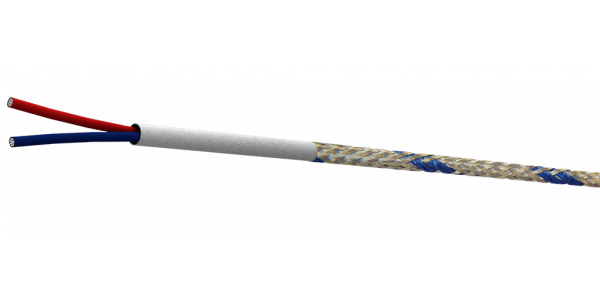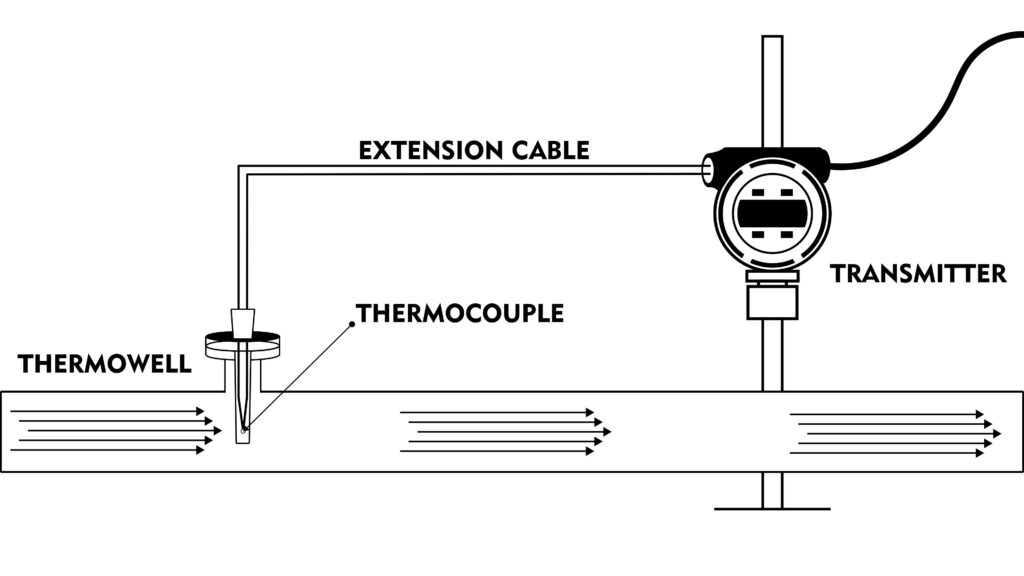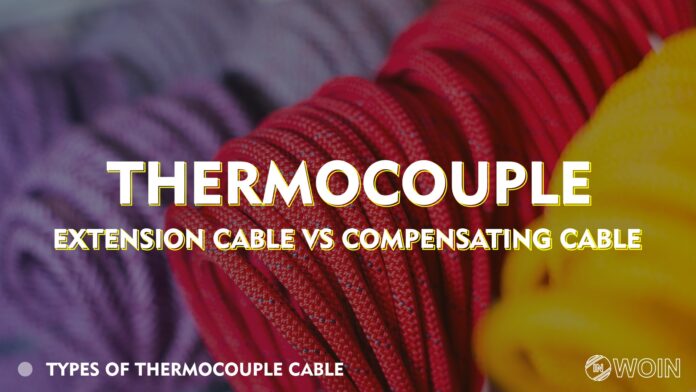Learning about Thermocouple Extension cable and Compensating cable is important. In this article, I will explain Thermocouple Extension vs Compensating Cable.
Introduction
We will discuss thermocouple extension and compensating cables in detail, why we need them, and what is difference between them. Why do we need Thermocouple Extension and Compensating cable?

We know that thermocouple is used to measure the temperature and it generates a millivolt proportional to the temperature and this millivolt is transferred to the temperature transmitter.

Now, what if the temperature transmitter is located at a distant place? We will surely need an extra-long cable. We generally call them thermocouple extension or compensating cable.
Connecting a cable to a thermocouple will again create junctions which will create emf and this will affect the emf generated by the original thermocouple hence readings will vary.
We require thermocouple extension or compensating cable which will not add or reduce the emf generated by the original thermocouple.
What is a Thermocouple Extension Cable?
The thermocouple extension cable is the cable used to connect a thermocouple to the temperature transmitter.
The extension cable is made of the same material as the thermocouple cable. Like for J-type thermocouples, cables are iron and constantan. So, the extension cable will be made up of iron and constantan only.
What is Thermocouple Compensating Cable?
The thermocouple extension cable is also the cable used to connect a thermocouple to the temperature transmitter but the main difference in compensating cable is that it contains cables of similar properties.
The extra cables are not of the same metals. The extra cable contains electrical properties and the same temperature and voltage relationship as that of the original cable (up to a certain limit).
Thermocouple compensation cables are generally coated with PVC material. We can use thermocouple compensating cables up to a limited temperature range like that of 200 degrees Centigrade.
Why cannot we use thermocouple extension cables everywhere for extending the length of a thermocouple?
As we know that thermocouples like B type thermocouples (70% Pt & 30% Rh and 94% Pt & 6% Rh), R type thermocouples (13% Pt & 87% Rh and 100% Pt), and S type thermocouples (10% Pt & 90% Rh and 100% Pt) have precious metals like Platinum and Rhodium in either or both cables.
So, extending these cables will become too costly. And for processes which are not that critical and also less profitable, we cannot use extension cables.
This is the main reason why thermocouple compensating cables become very useful with this type of thermocouple where extending the same type of cable becomes too costly.
For thermocouples like J type thermocouples; the thermocouple cable contains Iron-Constantan, the thermocouple cables can be extended because they are not that expensive and hence, they do not have any type of thermocouple compensating cables.
How are thermocouple extension cables and thermocouple compensating cables denoted?
The thermocouple extension cable is denoted by putting a letter X at the end of the thermocouple type like for a K-type thermocouple; the extension cable is denoted by KX.
Thermocouple compensating cables is denoted by putting a letter C at end of the thermocouple type like for S type thermocouple, it is SC. For R-type thermocouple, it is RC. For B-type thermocouple, it is BC. And for K-type thermocouple, it is KC.
Key points for thermocouple extension vs. thermocouple compensation cable
- The thermocouple extension cable is made up of the same material as that thermocouple. Thermocouple compensation cable is made up of other metals having similar electrical as well as voltage vs. temperature relationships as that of thermocouple cable.
- The thermocouple extension cable is costly for precious metal thermocouples and hence we use a thermocouple compensating cable there.
- Thermocouple compensating cables work up to a limited temperature range (about 200 degrees Centigrade)
EndNote
I hope now you have a better idea about the Thermocouple explanation and thermocouple compensation cable.
If you like this article you will also like my previous article on instrumentation impulse tubing.


